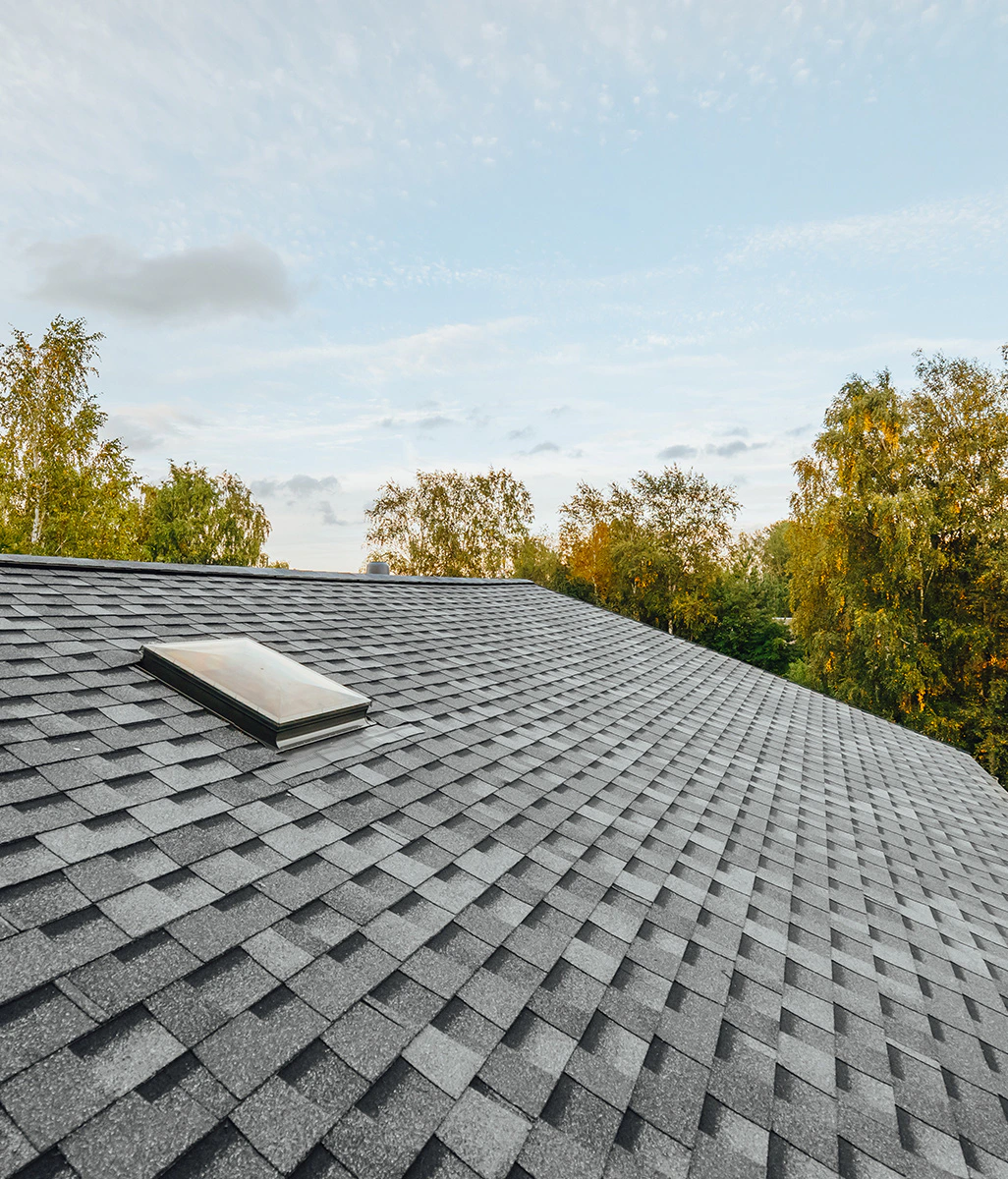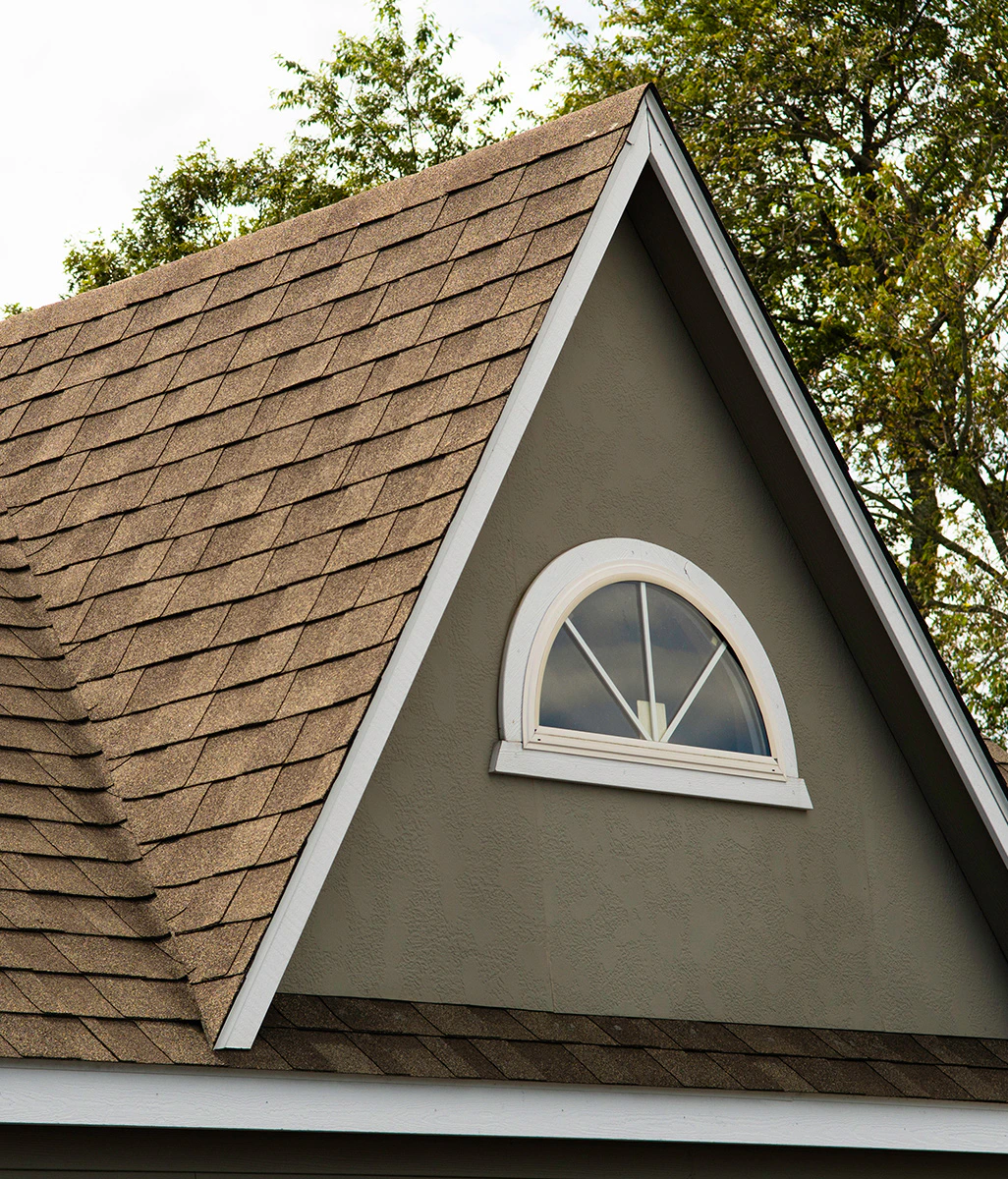Hailstorms are a fact of life in Colorado, especially in areas like Denver and the Front Range where summer storms can bring everything from pea-sized pellets to golf ball-sized bombs. While you might think your roof came through unscathed, hail damage isn’t always obvious from the ground. Left unchecked, even small cracks or bruises can lead to leaks, rot, or costly structural issues over time.
If your neighborhood just got pelted by hail, here’s what you need to know about identifying roof damage, filing an insurance claim, and deciding whether it’s time to call in a professional.
Related: How to Stay Ahead of Colorado Hail & Storm Season
Step 1: Do a Quick Visual Check
After the storm passes, take a walk around your home. Look for obvious signs of storm damage on your property: dented gutters, damaged siding, or granules from asphalt shingles washing out of your downspouts.
If you feel safe doing so, step back and look at your roof with binoculars or from a second-story window. While some hail damage is hard to spot without climbing up, you might notice:
- Missing or cracked shingles
- Exposed roof decking
- Dents on metal flashing, vents, or gutters
- Bruised, bare, or discolored shingle patches
These are all potential red flags that your roof has sustained hail damage and may need further inspection.
Step 2: Schedule a Professional Roof Inspection
Hail damage isn’t always visible to the untrained eye, and climbing onto a damaged roof yourself can be dangerous. That’s why your next move should be calling a trusted roofing contractor for a professional roof inspection.
At Lifetime Home Remodeling, our certified inspectors assess your entire roofing system, including shingles, flashing, underlayment, and ventilation. We provide a full damage report, photos, and guidance on whether repairs or full roof replacement may be necessary. We’re also local to Colorado, so we understand what to look for when it comes to hail patterns and regional roofing materials.
Step 3: Document and File Your Insurance Claim
If your inspection reveals significant storm damage, you’ll want to act fast. Most homeowners’ insurance policies cover hail damage — but only if the claim is filed within a certain timeframe (often 6 to 12 months).
Here’s how to prepare for your claim:
- Document all visible damage with photos
- Save any storm reports or weather alerts for your area
- Keep a record of the date and time of the hailstorm
- Get a written estimate from your roofing contractor
Your insurance adjuster may want to do a separate inspection. Having a contractor like Lifetime on your side during that visit can help ensure nothing gets overlooked and that you receive a fair settlement for your hail damage repair or replacement.
Step 4: Don’t Delay Repairs or Replacement
Procrastinating and putting off repairs after a hailstorm can lead to bigger — and more expensive — problems down the road, including:
- Water intrusion and leaks
- Mold and mildew growth
- Higher energy bills from lost insulation
- Reduced home value or difficulty selling
If the damage is severe enough to require a new roof, our team at Lifetime will help you explore durable, high-performance roofing options designed to withstand Colorado’s unpredictable weather, including impact-resistant asphalt shingles, composite shake, metal roofing, and more.
Work with Colorado’s Award-Winning Roofing Team
When hail hits, homeowners across the Denver metro area turn to Lifetime Home Remodeling for fast, reliable, expert care. With the highest quality materials and double transferable warranties on new roofing, our goal is to give your house a roof built to last through Colorado’s toughest seasons. If you’ve experienced recent Denver hail or suspect Colorado hail damage to your roof, don’t wait. Contact Lifetime Home Remodeling today to schedule your professional inspection and get back to feeling secure under your roof.
Our teams of experts are here to help
Contact UsDoor Expert
Expert
Expert
Expert



